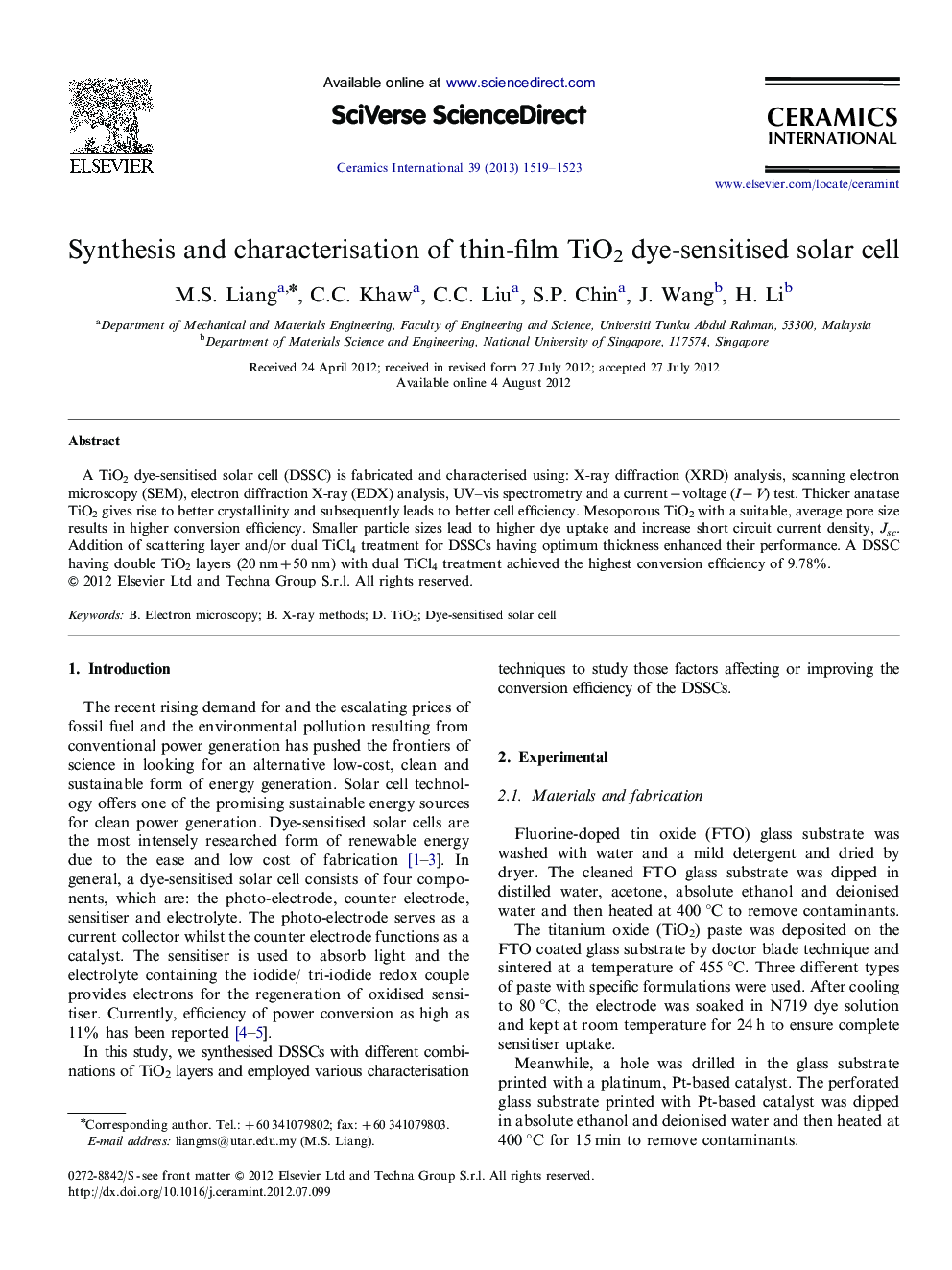| Article ID | Journal | Published Year | Pages | File Type |
|---|---|---|---|---|
| 1462198 | Ceramics International | 2013 | 5 Pages |
A TiO2 dye-sensitised solar cell (DSSC) is fabricated and characterised using: X-ray diffraction (XRD) analysis, scanning electron microscopy (SEM), electron diffraction X-ray (EDX) analysis, UV–vis spectrometry and a current−voltage (I−V) test. Thicker anatase TiO2 gives rise to better crystallinity and subsequently leads to better cell efficiency. Mesoporous TiO2 with a suitable, average pore size results in higher conversion efficiency. Smaller particle sizes lead to higher dye uptake and increase short circuit current density, Jsc. Addition of scattering layer and/or dual TiCl4 treatment for DSSCs having optimum thickness enhanced their performance. A DSSC having double TiO2 layers (20 nm+50 nm) with dual TiCl4 treatment achieved the highest conversion efficiency of 9.78%.
